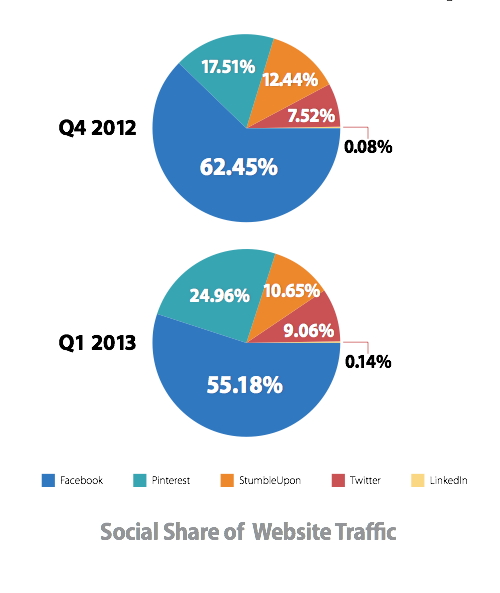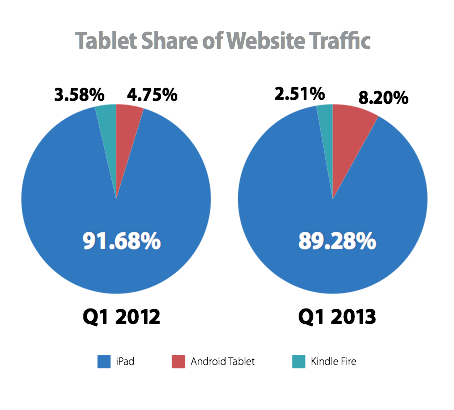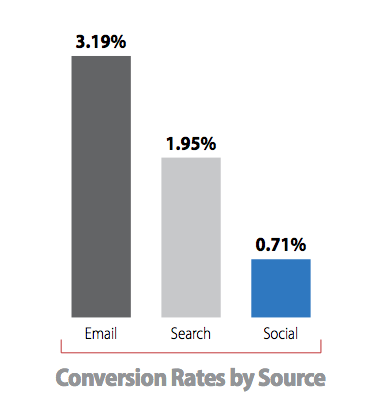By adaptive - May 27th, 2013
The development of social media networks as places to shop continues apace, but are brands seeing these channels deliver real value to their bottom lines?
Corporations that are looking closely at the traffic that is driven to their e-commerce enabled websites may be lamenting the fact that these in-bound customers are not coming to their sites in any large numbers from social media networks. Indeed, the latest figures from Monetate suggest that less than 2% of all traffic originates from social media networks.
Monetate stare in their EQ1 report: “Forrester Research suggests that word of mouth is part of 80% of all purchase funnels. At least some of this word of mouth is occurring via social media, with brand or product mentions spawning searches and/or direct URL entries that are included in this data. But, because social media wasn’t the final link in the chain, it gets none of the credit for the desirable consumer behaviour it spurred.
“New research from Google shows that social media is very much an awareness-building vehicle, and less so a purchase-driving tactic. In fact, of all the online behaviours studied by Google—which are almost identical to those examined by Monetate—social media is the second “earliest” (after only clicks on display advertising) in the average U.S. consumer’s purchase path.”

In addition, tablets and smartphones are grabbing more device share of ecommerce traffic. Tablets and smartphones were 21.02% of traffic, compared to just 2 percent two years ago. Tablets (10.58%) led smartphones (10.44%) in ecommerce traffic. Despite the rapidly increasing traffic being driven to sites through tablets and smartphones, only 14% of companies optimize for tablet users and only 13% optimize for smartphone, compared with 43% percent that personalize for desktop users.

“As marketers know, data can tell a story and the EQ1 2013 tells the story of a fast-growing ecommerce market where companies face growing opportunities and challenges,” said Blair Lyon, vice president, marketing, Monetate. “We focused this EQ on social commerce since the data shows the companies have not yet cracked the code in leveraging social media to drive ecommerce traffic. We know that social media plays an important role in influencing social purchases – to what degree brands are able to leverage social to build loyalty is the next big question.”
So should your business continue to devote time and resources to the development of inbound traffic from social media channels? The answer is a definite yes, but businesses are realising that applying their traditional techniques that have been effective with other direct marketing approaches, need to be modified when social media is concerned.

As Monetate conclude: “Take a step back to evaluate the different social traffic sources leading people to your website. Then figure out exactly how much impact each social network is having on those visits. Examine each segment, and look for deviations. For instance, maybe you discover that Facebook visitors are interested in reading ratings and reviews. If so, create a website experience for them that puts reviews front and center. Simply observing the behavior of social traffic can reveal a lot about visitors, and put you in a better position to respond.”
This report offers two key pieces of insight: The first is that social commerce is developing but perhaps not fast enough for coporations that are impatient to see a return on the investments they are making across their social media channels. Patience is needed as this new form of in-bound marketing continues to evolve. Conversion will increase, but it’s not going to be over the short term. And secondly, the in-bound marketing that is effective is increasingly coming from mobile devices most notably the tablet with Apple’s iPad reining supreme. If your business is not optimised for this portable environment, conversion will remain stubbornly low.
